Automating the process of reconciling bank statements is a vital practice for bookkeepers and accountants. This approach not only saves time but also reduces errors, ensuring that financial records are accurate. With the right tools and practices, businesses can streamline their reconciliation process, making it more efficient and effective. In this article, we will explore the fundamentals of bank statement reconciliation, the steps to automate the process, best practices, and the benefits of automation.
Key Takeaways
Automating bank reconciliation helps save time and minimize mistakes.
Regular reviews of automated reports are crucial for maintaining accuracy.
Choosing the right software can greatly simplify the reconciliation process.
Understanding the Basics of Bank Statement Reconciliation
Why Reconciliation Matters
Let’s face it: keeping track of your money can feel like trying to herd cats. Bank statement reconciliation is your way of ensuring that your financial records match up with your bank’s records. It’s like a financial check-up, helping you catch any discrepancies before they turn into big problems. Think of it as your monthly money therapy session!
Common Challenges in Manual Reconciliation
Manual reconciliation can be a real headache. Here are some common challenges you might face:
Time-consuming: It can take hours to match transactions.
Human error: Mistakes happen, and they can be costly.
Missing transactions: Sometimes, things just slip through the cracks.
The Role of Technology in Simplifying Reconciliation
Enter technology! With the right tools, you can automate much of the reconciliation process. This means less time spent on tedious tasks and more time for the fun stuff—like actually running your business! Automated systems can help you:
Reduce errors: Less manual entry means fewer mistakes.
Save time: Get back hours of your life each month.
Gain insights: Automated reports can help you understand your financial health better.
Remember, a bank reconciliation is the process by which a company compares its internal financial statements to its bank statements to catch any discrepancies. It’s not just a chore; it’s a crucial part of keeping your finances in check!
Steps to Automate Bank Statement Reconciliation
Choosing the Right Software
Choosing the right software is like picking the perfect pair of shoes. You want something that fits well and makes your life easier. Look for software that can streamline monthly statement reconciliation and integrates with your bank. Popular options include QuickBooks, Xero, and FreshBooks. They can help you automate the tedious parts of reconciliation, so you can focus on more important things—like planning your next vacation!
Setting Up Automated Workflows
Once you’ve got your software, it’s time to set up automated workflows. Think of this as setting up a robot to do your chores. Here’s how:
Link your bank account to the software. This allows for real-time updates.
Set rules for categorizing transactions. For example, all coffee shop expenses can go under “Office Supplies”—because who doesn’t need caffeine to survive the workday?
Schedule regular reconciliations. Monthly is a good start, but if you’re feeling ambitious, try weekly!
Monitoring and Adjusting Automation Processes
Just because you’ve set it and forget it doesn’t mean you can kick back and relax. You need to keep an eye on things. Here’s how:
Review automated reports regularly. This helps catch any discrepancies before they become big problems.
Adjust rules as needed. If you notice that your software is miscategorizing transactions, tweak those rules.
Stay updated on software features. New updates can offer better automation options, so don’t miss out!
Remember, automation is a tool, not a magic wand. You still need to be involved to ensure everything runs smoothly!
Best Practices for Automated Reconciliation

Maintaining Accurate Records
Keeping your records accurate is like keeping your favorite snack stash hidden from prying eyes—essential! You want to ensure that every transaction is documented. This means organizing receipts, invoices, and bank statements in a way that even your future self would understand. Here’s how to do it:
Use a digital filing system to keep everything tidy.
Regularly back up your data to avoid any nasty surprises.
Make sure to categorize transactions correctly to avoid confusion later.
Regularly Reviewing Automated Reports
Just because you’ve automated doesn’t mean you can kick back and relax! You still need to keep an eye on those reports. Think of it as checking your favorite show’s ratings—important for keeping the drama alive! Here’s what to focus on:
Look for discrepancies between your records and bank statements.
Review trends in your financial data to spot any unusual activity.
Schedule regular check-ins to ensure everything is running smoothly.
Ensuring Data Security and Compliance
In the world of finance, security is king! You wouldn’t leave your front door wide open, right? Protecting your data is crucial. Here’s how to keep your financial information safe:
Use strong passwords and change them regularly.
Implement two-factor authentication for an extra layer of security.
Stay updated on compliance regulations to avoid any nasty fines.
Remember, a little diligence goes a long way in keeping your financial data safe and sound!
By following these best practices for automating bank reconciliation, you’ll not only streamline your processes but also ensure that your financial health remains in tip-top shape!
Benefits of Automating Bank Statement Reconciliation

When it comes to bank statement reconciliation, automation is like having a superhero on your team. Let’s dive into the perks!
Saving Time and Reducing Errors
Automating your bank reconciliation can save you a ton of time! Instead of spending hours manually checking each transaction, you can let software do the heavy lifting. This means fewer mistakes and more time for coffee breaks (or actual work).
Improving Financial Accuracy
With automated bank reconciliation, you can say goodbye to those pesky human errors. The software cross-checks your bank statements and records, ensuring everything matches up perfectly. It’s like having a second pair of eyes that never gets tired!
Enhancing Business Decision Making
When your financial data is accurate and up-to-date, you can make better decisions. You’ll have a clear picture of your cash flow, which is crucial for planning and growth. Think of it as having a GPS for your business finances—no more getting lost!
Benefit | Description |
|---|---|
Time Savings | Automate routine tasks to focus on growth. |
Error Reduction | Minimize mistakes with software checks. |
Better Insights | Make informed decisions with accurate data. |
Automating bank reconciliation is not just a luxury; it’s a necessity for modern businesses.
In summary, embracing automated bank reconciliation for small businesses can lead to significant improvements in efficiency and accuracy. So, why not give it a shot? Your future self will thank you!
Wrapping It Up: Your Monthly Reconciliation Adventure
So there you have it! Automating your monthly bank statement reconciliation doesn’t have to feel like climbing Mount Everest. With the right tools and a sprinkle of organization, you can make this task a breeze. Remember, it’s all about keeping your records tidy and spotting those pesky discrepancies before they become a headache. Plus, who doesn’t love the satisfaction of seeing those numbers match up? So grab your favorite coffee, fire up that software, and let’s make reconciliation your new favorite monthly ritual!
Frequently Asked Questions
What is bank statement reconciliation and why is it important?
Bank statement reconciliation is the process of comparing your business’s bank records with the bank’s records. It helps ensure that your financial records are accurate, find mistakes, and detect fraud.
How often should I reconcile my bank statements?
It’s generally best to reconcile your bank statements every month. However, if your business has many transactions, you might want to do it weekly or bi-weekly to keep everything organized.
Can I automate the bank reconciliation process?
Yes, you can use software to automate bank reconciliations. This can save time and reduce errors by automatically matching transactions from your bank statement with your records.







